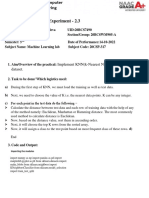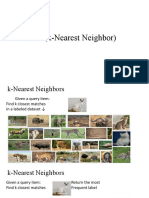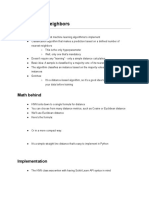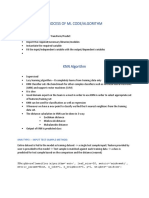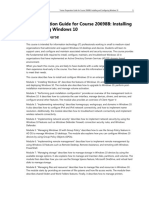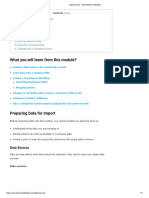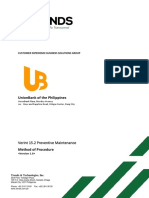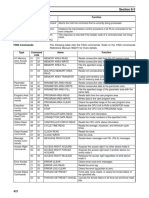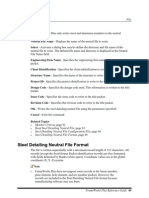0% found this document useful (0 votes)
48 views6 pagesLecture-11-K Nearest Neighbors-Part2 - Jupyter Notebook
This document is a Jupyter Notebook detailing the implementation of the K Nearest Neighbors (KNN) algorithm using Python. It covers data import, standardization, train-test splitting, model training, and evaluation, including the use of confusion matrices and classification reports. The notebook also discusses selecting an optimal K value using the elbow method.
Uploaded by
pateljil0247Copyright
© © All Rights Reserved
We take content rights seriously. If you suspect this is your content, claim it here.
Available Formats
Download as PDF, TXT or read online on Scribd
0% found this document useful (0 votes)
48 views6 pagesLecture-11-K Nearest Neighbors-Part2 - Jupyter Notebook
This document is a Jupyter Notebook detailing the implementation of the K Nearest Neighbors (KNN) algorithm using Python. It covers data import, standardization, train-test splitting, model training, and evaluation, including the use of confusion matrices and classification reports. The notebook also discusses selecting an optimal K value using the elbow method.
Uploaded by
pateljil0247Copyright
© © All Rights Reserved
We take content rights seriously. If you suspect this is your content, claim it here.
Available Formats
Download as PDF, TXT or read online on Scribd
/ 6

















